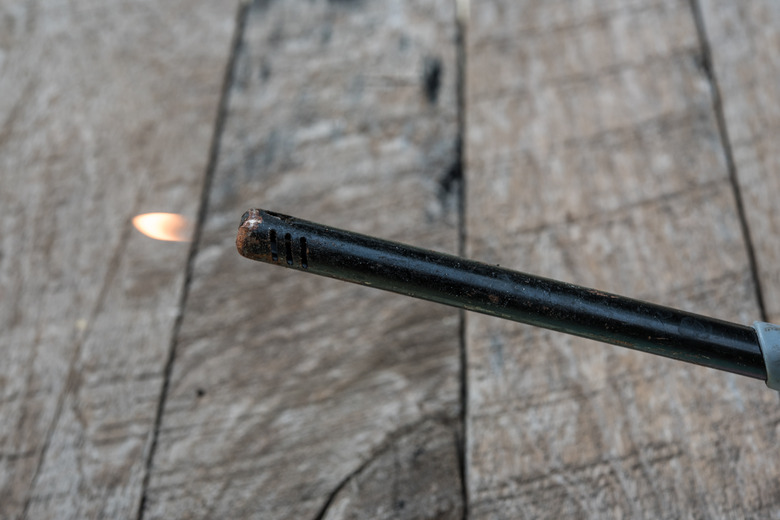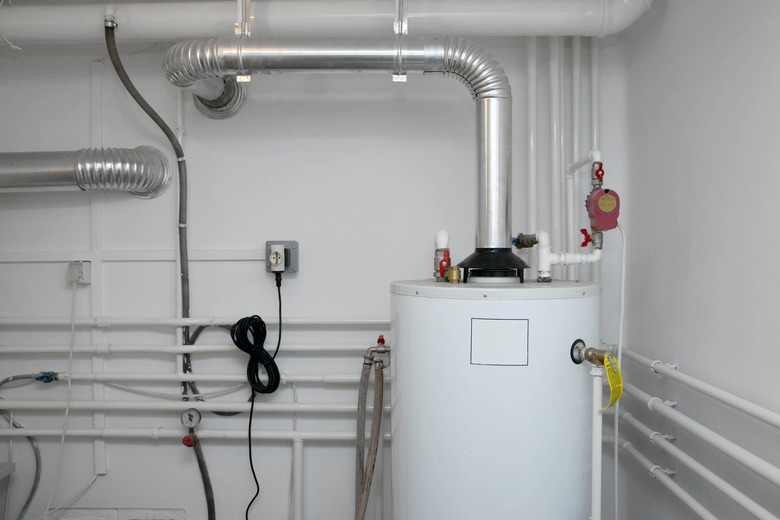How To Relight The Pilot Light On A Gas Furnace
We may receive a commission on purchases made from links.
Before the 1980s, every gas furnace had a standing pilot light, but these days, not so much. However, you may be the lucky owner of one of these vintage gas appliances, or you may have purchased a lower-end furnace manufactured by a company that still uses this technology. If so, the procedure for relighting the pilot light is essential knowledge for you because it's not a question of if the pilot light goes out but when, and you want to be ready so you don't have to suffer through a cold night without a furnace.
The procedure is fairly straightforward, and it's exactly the same as it is for a gas water heater or a room heater with a standing pilot, although all appliances with standing pilots are becoming more rare. If you have a gas water heater with a standing pilot, the steps for relighting it are often displayed on the front, so in a pinch, you can refer to those to get a handle on the procedure for your furnace. You should understand a few things about how a standing pilot system works, though, in case you run into trouble, and things don't go as smoothly as you expect.
When Do You Need to Relight the Pilot?
When Do You Need to Relight the Pilot?
A standing pilot light is a small flame positioned next to the main burner that is constantly burning. If you think that seems like a colossal waste of gas, you're right to a degree, but it's also a surefire way to ignite the burner when the gas valve switches on. A standing pilot light consumes 5 to 12 therms of gas per month, which translates to a monthly expense of $7.50 to $18 for natural gas and slightly more for propane.
That's not exactly a colossal waste, but it's significant. It represents about 20 percent of all the gas wasted in the United States annually, and it generates about 450 pounds of carbon dioxide over a six-month period. These are two good reasons to turn off the pilot in the summer, which makes it important to know how to relight it when winter rolls around.
Even if you don't turn off your pilot light for the summer, chances are it's going to go off all on its own for one of a number of reasons. There could be an interruption in the gas supply or a blast of wind that blows it out, the pilot tube could get clogged or the thermocouple, which is a heat-sensitive electronic part that keeps the pilot flame lit, could wear out.
How a Standing Pilot Light Works
How a Standing Pilot Light Works
The pilot flame burns at the end of a small tube positioned near the main burner, and it stands to reason that the gas valve has to be open for this to happen. What if the pilot goes out? Without some kind of safety mechanism in place to shut off the flow of gas, gas would eventually fill the burner compartment, spill out into the furnace room and create an extreme fire and explosion hazard. The thermocouple, which is a long copper tube with a probe on one end, is the safety mechanism that prevents this.
The thermocouple probe is strategically placed to remain in the pilot flame, and as long as the flame is burning, the probe generates an electrical current that signals the gas valve to stay open. When the flame goes out, the current stops, and the valve closes. Unfortunately, thermocouples wear out, and when one fails to generate enough current to open the gas valve, you won't be able to light the pilot nor will the flame stay lit if the thermocouple is too far from the flame. This is a good thing to remember if you find it difficult to light the pilot, or you find yourself having to do it frequently.
Things Needed
How to Relight a Gas Furnace Pilot Light
1. Locate the Pilot Light
The gas control valve and the control knob aren't in the exact same place on every model, but they are usually easily accessible, although you often have to remove an access panel to find them. There are two small copper tubes attached to the control valve, and if you follow either of these, they will lead you to the pilot light, which is inside the burner cavity. It's dark in there, so you'll probably need a flashlight.
2. Determine Whether the Unit Has a Spark Ignitor
The control knob, sometimes called the reset button, is often red, and it has three settings: "off," "pilot" and "on." If the unit has a piezoelectric spark ignitor, you'll see a button next to the control knob. Pressing this button generates a spark to start the pilot flame. If you don't see this button, you'll need a long match or lighter to start the pilot.
3. Turn Off the Gas Control
Turn the control knob to the "off" position and leave it there for five minutes. This allows any gas that may have leaked into the burner chamber to dissipate.
Warning
Do not attempt to relight the pilot if you smell gas after this time has elapsed. There may be a gas leak. Call an HVAC technician immediately.
4. Start the Gas Flow
Turn the control knob to the "pilot" position, press it in and hold it. This starts the flow of gas to the pilot tube.
5. Ignite the Flame
Press the spark igniter repeatedly while watching the pilot. You should hear a loud click and see a spark every time you press, and eventually, one of the sparks will ignite the gas. If the unit doesn't have a spark igniter, hold a lighted match or long-reach lighter to the pilot to ignite the flame.
6. Hold In the Control Knob
Continue depressing the control knob for 10 to 20 seconds after the flame ignites. This gives the thermocouple time to warm up and generate the current that will keep the gas valve open. If you release the knob too soon and the flame goes out, turn the knob back to "off," wait five minutes and start the procedure again.
7. Turn the Knob to "On"
Once the pilot is burning, turn the control knob to the "on" position, which will allow gas to flow to the main burner when the thermostat calls for heat.
Electronic Ignition Systems
Electronic Ignition Systems
In the 1980s, furnace manufacturers, notably Rheem and Rudd, began supplying gas appliances with electronic pilots that ignite the pilot flame or the burner itself, eliminating the need for relighting the pilot. Most modern gas furnaces have a hot surface igniter, which is yet another type of electronic ignition system that relies on resistive heat to start the burner. Because these aren't standing pilot lights, you never have to relight them.
No matter what type of ignition system your gas furnace has, it can fail if there is an obstruction in the gas line, a problem with the gas regulator valve or a loss of gas pressure due to carbon buildup on the burner or in the pilot orifice. Disassembling a gas system to clean it is doable, but it's dangerous and typically beyond the skill of the average homeowner. When the pilot or burner isn't operating as it should, it's usually best to call a licensed HVAC specialist rather than trying to fix things yourself. This is particularly true if the gas valve is malfunctioning because most communities require people who work on gas valves to have a license.

